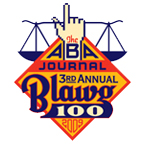A Look Back, A Look Forward and Many Thanks
As my readers know, GBLB is on Maternity Leave until February 1, but I couldn't pass up the opportunity to take a look back at the last year in green building, look forward to the next decade, and give a shout out to a few people and resources that are important to GBLB.
2009 In Green Building Law
What we saw...
Regulatory enhancement at the federal level--Through the Stimulus Bill, Executive Orders, administrative rulemaking and draft Climate Change legislation, the Obama administration and the 2009 Congress took action on green building regulation on the Federal level.
Regulatory degradation at the local level--From New York to London, localities which passed green building regulations have been scaling back their regulatory schemes due to economic distress.
Stimulation from the stimulus, but not as much as promised--Over $1.5 billion has been spent through the ARRA--also known as the stimulus bill--on green projects, but that is far shy of the total allocated funds, and much, much less than non-green spending.
What we didn't see...
More private lawsuits--We didn't really see a bumper crop of private litigation over green building projects. With so many developers, architects, etc. in financial distress, litigation is not high on the list of business expenses--not to mention suing judgment proof entities is a fruitless exercise. As the economy picks up, lawsuits may pick up as well.
2010 In Green Building Law
What we will see...
Conflict over addtional green building regulation and enforcement of existing regulations--as local governments continue to suffer with economic woes, there will be continuing debate over whether green building incentives are affordable, and whether green building mandates are stifiling development.
Potential for national building code regulation--If Climate Change legislation is enacted, it may contain national energy efficiency building code regulation. This will this be game changing for state and local green building regulation--the federal regulations may preempt state and local actions, and will also put new obligations on states and localities to develop and pass energy efficient building codes. Federal legislation on building codes may also open the door for a legal challenge regarding the federal government's authority to regulate this historically state and local area of regulation, especially if there are significant unfunded mandates regarding the development and enforcement of new building codes.
What we might see,..
More lawsuits--If the economy rebounds, and there is more money flowing in lending to real estate, more green buildings will be built, and that will lead to moe contracts, more defaults and more litigation. But that is a maybe for 2010--the credit markets need to loosen considerably before this becomes reality.
International climate change targets--Obama's efforts at Copenhagen to get an international climate change agreement may bring some international requirements into fruition over the next year. These would drive domestic policy changes, and green building policies will undoubtedly be a component of such regulatory schemes.
People We Loved In 2009
The GSA--The people at the General Services Administration were so open, cooperative and helpful in putting together our statistics for the Stimulus posts this year.
Chris Cheatham at Green Building Law Update--We co-authored a chapter on Green Building Litigation together for a new book on Green Building Law.
Professors Rob Fleming and Chris Pastore, co-directors of Philadelphia University’s Engineering and Design Institute, an interdisciplinary research center focusing on green materials, sustainable design and community outreach, and the hosts of a great radio show on sustianability, Ecoman and The Skeptic.
To my friends Scott Edward Anderson, also known as the Green Skeptic, Chris Hill atConstruction Law Musings, Stephen Del Percio at greenbuildingsnyc, Rich Cartlidge at Green Building Envirotrends, Tim Hilll, at VAConstruction Law and Mitch Swann for inspiring great green building law conversations all year long.
Finally, a big shout out to our fabulous green building law blog community members. Thank you for reading, commenting, and nominating us for the ABA Blawg 100.
Wishing you a happy new year and a greener 2010!

 Shari focuses on energy, environmental and building code policy, representing international companies, non-profits and trade associations in their policy and communications campaigns
Shari focuses on energy, environmental and building code policy, representing international companies, non-profits and trade associations in their policy and communications campaigns

